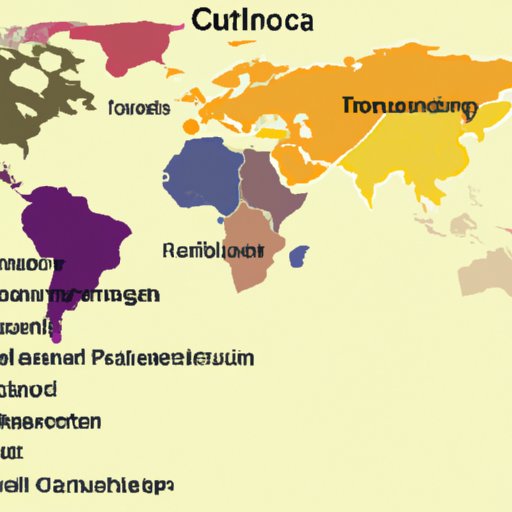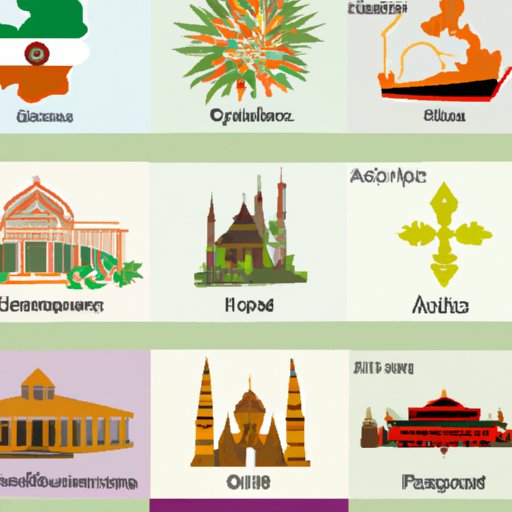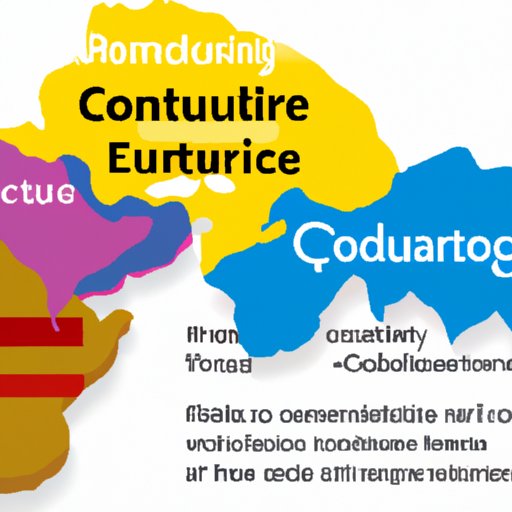
Overview of What a Culture Region Is
A culture region is an area with distinct characteristics that are shaped by geography, politics, language and religion, ethnicity, and economics. It is a region where people share common cultural traits that set them apart from other areas. These shared characteristics can include language, religion, customs, art, music, food, clothing, and architecture. A culture region is often defined by physical boundaries such as mountains, rivers, or deserts, but it can also be defined by political boundaries or economic activities.
Exploring the Different Types of Culture Regions
There are several different factors that influence a culture region. Physical geography, such as climate, topography, and natural resources, plays an important role in shaping a culture region. Political boundaries, such as borders between countries or provinces, can also shape a culture region. Language and religion are two other important factors that can influence a culture region. Ethnic groupings, such as those based on race or nationality, can also be influential. Finally, economics, such as trade patterns or industrialization, can have a significant impact on a culture region.

Examples of Culture Regions Around the World
Culture regions can be found all over the world. In Europe, for example, there are distinct culture regions such as the Mediterranean, Scandinavia, and Central Europe. The Middle East is known for its unique culture, while Africa is home to a variety of cultures. Asia is home to many culture regions, including East Asia and South Asia. North America is home to many culture regions, such as the United States, Canada, and Mexico. South America has many distinct culture regions, such as Brazil, Argentina, and Peru.
The Role of Geography in Defining Culture Regions
Geography plays an important role in defining culture regions. Climate, topography, and natural resources can all influence a culture region’s characteristics. For example, the climate of a region can affect what type of crops are grown and what type of clothing is worn. The topography of a region can determine where people live and how they travel. Natural resources can also shape a culture region, as some areas may be more reliant on certain resources than others.

How to Identify and Analyze a Culture Region
When identifying and analyzing a culture region, it is important to consider the cultural characteristics of the area. This includes examining the language, religion, customs, art, music, food, and clothing of the people who live in the region. It is also important to analyze the connections between people and land, such as how geography has influenced the development of the culture region. Examining the historical context of the region can provide insight into how the culture has evolved over time. Finally, understanding the impact of globalization is essential in understanding how culture regions are changing in the modern world.
Conclusion
A culture region is an area with distinct characteristics that are shaped by geography, politics, language and religion, ethnicity, and economics. There are many different types of culture regions around the world, and each one is unique in its own way. Geography plays an important role in defining a culture region, as climate, topography, and natural resources can all influence its characteristics. When identifying and analyzing a culture region, it is important to consider the cultural characteristics of the area, as well as its historical context and the impact of globalization.
(Note: Is this article not meeting your expectations? Do you have knowledge or insights to share? Unlock new opportunities and expand your reach by joining our authors team. Click Registration to join us and share your expertise with our readers.)
